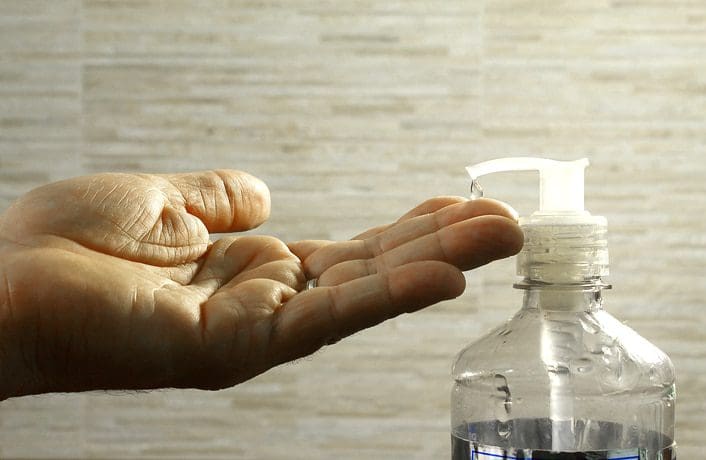words Al Woods
With the unprecedented spread of coronavirus (COVID-19), health and safety practices have taken the utmost priority. This is especially true for immunocompromised people who are living with underlying conditions, as well as older adults who are at a greater risk of developing serious complications from COVID-19.
Since hand washing or cleaning has become a hot topic during the pandemic, hand sanitizer products have also recorded a heightened usage. But before you order a handy bottle of sanitizer, it’s important to understand the facts behind its basic functions.

1. It’s Not a Substitute for Handwashing
Washing your hands frequently is one of the top safety practices against COVID-19. This approach applies to all ages, no matter if you are performing your duties as an essential worker or only going out of your home for critical chores.
It’s because washing your hands with soap and water helps you clean any external contaminants including virus-inducing germs off of them. The friction that occurs while rubbing soap across your hands breaks down bacteria within your skin. Whereas, the water helps wash it all off. This provides you with optimal protection from various infections.
On the other hand, hand sanitizer is able to kill common germs right where they are instead of washing them off. Since sanitizers are only able to terminate these germs and not any external elements, any contaminants that are on your hands also stay right where they are.
In order to properly clean all germs and ensure optimal protection against coronavirus, make sure to wash your hands whenever possible. Use hand sanitizers only when washing your hands is not possible.
2. But It Is a First Line of Defense in Certain Situations
This statement may sound contradictory to the first point. But it is for a good reason. While using a hand sanitizer should be your secondary approach as compared to soap and water, it should be your first choice in certain situations.
This includes your visits to grocery stores, healthcare facilities, restaurants, cafes, and any other public place. By using a hand sanitizer before going into such a facility and right before leaving it, you can make sure to reduce the risk of surface transmission of COVID-19.
Keeping this in mind, make sure that you have a pocket-sized bottle of sanitizer available with you at all times. This ensures that you are able to keep your hands clean at places where washing them is not possible.

3. Not All Hand Sanitizers Kill 99.99 Percent of Germs
While hand sanitizers are available in several brands and different packaging, not all products are made to kill an optimal amount of germs. Even the most popular sanitizer brands may vary in terms of their efficacy.
Most of this difference in performance arises from the usage of key ingredients. As such, any sanitizer that uses benzalkonium chloride as its base component is considered less reliable as compared to a sanitizer that uses alcohol.
According to the U.S. Centers for Disease Control (CDC), it is important that you choose an alcohol-based hand sanitizer with at least 60 percent ethanol or 70 percent isopropanol. This gives you an ideal level of protection and the most value for money.
4. Make Sure to Use the Proper Rubbing Technique
It’s not uncommon for public service announcements (PSAs) to show you how to wash your hands properly. From suggesting the 20-second rule to giving you songs to sing along during your handwashing, there is a lot of information available on that front.
But when it comes to using hand sanitizers, the proper details are not as widely available. This causes many people to assume that there is no technique to using hand sanitizers. But there definitely is one. And you should certainly learn it.
The suggested approach is simple and quite easy to follow.
- Hold out one hand
- Pour a sufficient amount of sanitizer at the center of your palm.
- Rub both hands together.
- Make sure that the sanitizer covers your palms and inner fingers.
- Pay special attention to your fingertips, especially the area at the top.
- Ensure to spread the sanitizer towards the back of your hands.
- Focus on rubbing the space between your fingers.
- Continue rubbing until the sanitizer dries out.
The whole process takes about 20-30 seconds, which is the same amount of time that it takes to wash your hands with soap and water. If you take less than 20 seconds or do not spread the hand sanitizer across your skin properly, it can compromise your sanitization.
5. Disinfectants Are Not Made for Sanitizing Your Hands
The efficacy of common household products against the novel coronavirus might make you think that you can use bleach and other cleaners as sanitization products. Nothing could be further from the truth.
It’s because common disinfectants are not made to use on human skin. Whether you are talking about typical household cleaners or antibacterial surface wipes, none of these products are meant to be applied on anything other than nonliving surfaces.
In fact, these products contain such high levels of chemicals upon direct application that they can cause damage to your skin and overall health. This is why, make sure to steer clear from these items and only use a proper hand sanitizer that is purpose-built to be used on your skin.
6. Keep Them Out of Reach of Children
Among other ingredients, even high quality hand sanitizers have a high amount of alcohol in them. This makes them unsafe for ingestion and can cause harm to anyone who uses them orally.
Keeping this in mind, make sure that your sanitizer bottles are not simply lying around in easy reach of children. In addition to keeping them in their original packaging, ensure that you have them available in a space away from the prying hands of the young ones.
You should also keep in mind that hand sanitizers are highly flammable. This once again calls for care from your end, especially if your household has any young and curious minds who may want to put this little fact to the test.
7. Stay Away from Sanitizers That Are Made at Home
The expansion of do-it-yourself (DIY) specialists through online platforms has made way for several commercial products to be replicated by hobbyists at home.
While this approach can be quite helpful in terms of finding clothing, accessories, and home decor, it can be dangerous when it comes to essential health products such as a hand sanitizer.
Even if DIY enthusiasts claim that their hand sanitizers are effective against common germs, including the virus that causes COVID-19, there is no easy way for you to verify their promise. This is especially true considering that hand sanitizers need professionally-controlled processes to be effective.
Going for homemade sanitizer products not only exposes you to further risk of contracting common infections, but also makes you a target for side-effects such as skin burns.
In order to steer clear of these issues, make sure that you only buy sanitizers that are made commercially and under strict healthcare guidelines.
Hand Sanitizers Are Effective When You Use Them Properly
Sanitizers are an effective mode of defense against COVID-19 when you know how to correctly use them in combination with other safety practices. By keeping these tips in mind, you can ensure to make the most out of your choice of sanitizer and its daily usage.



















